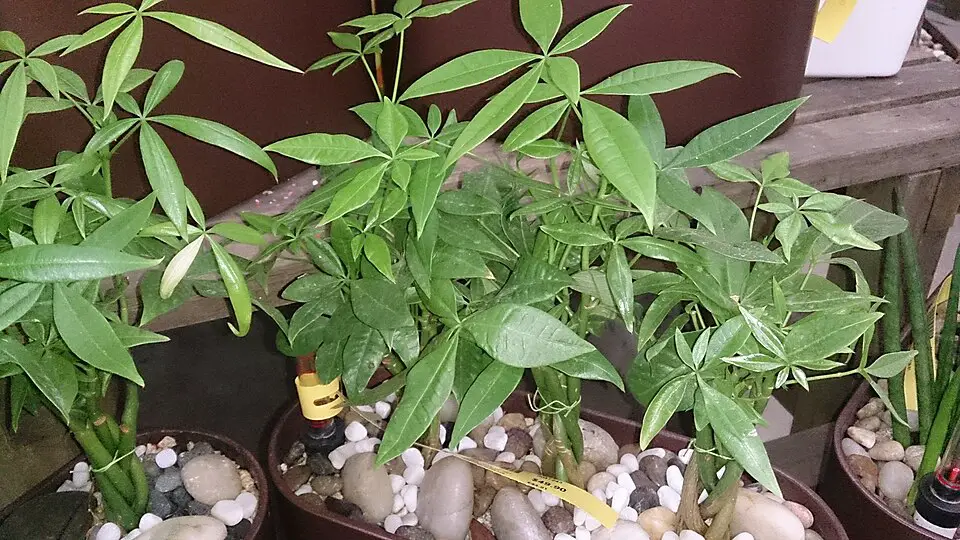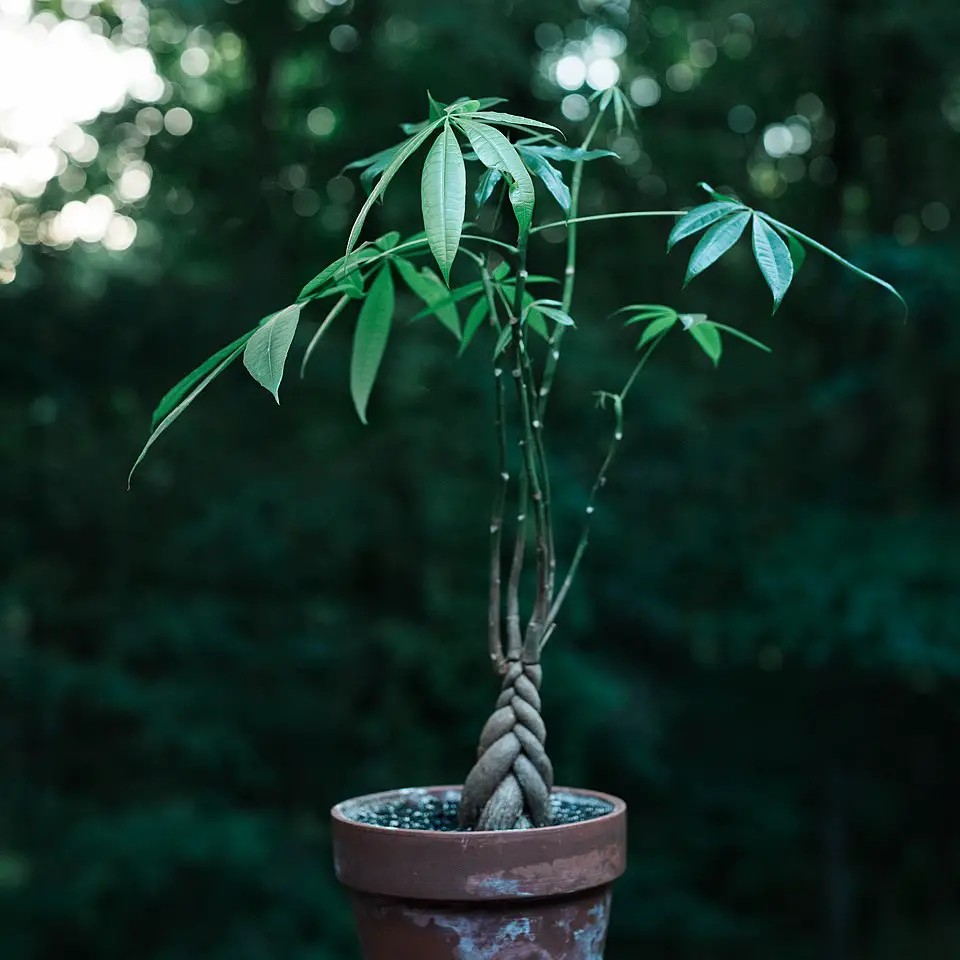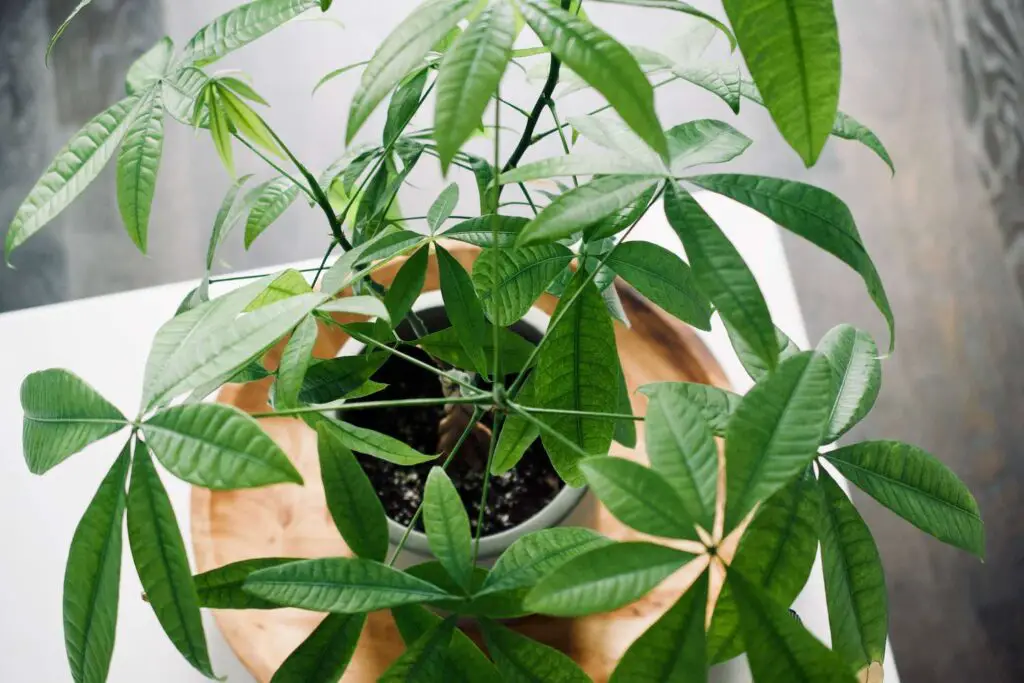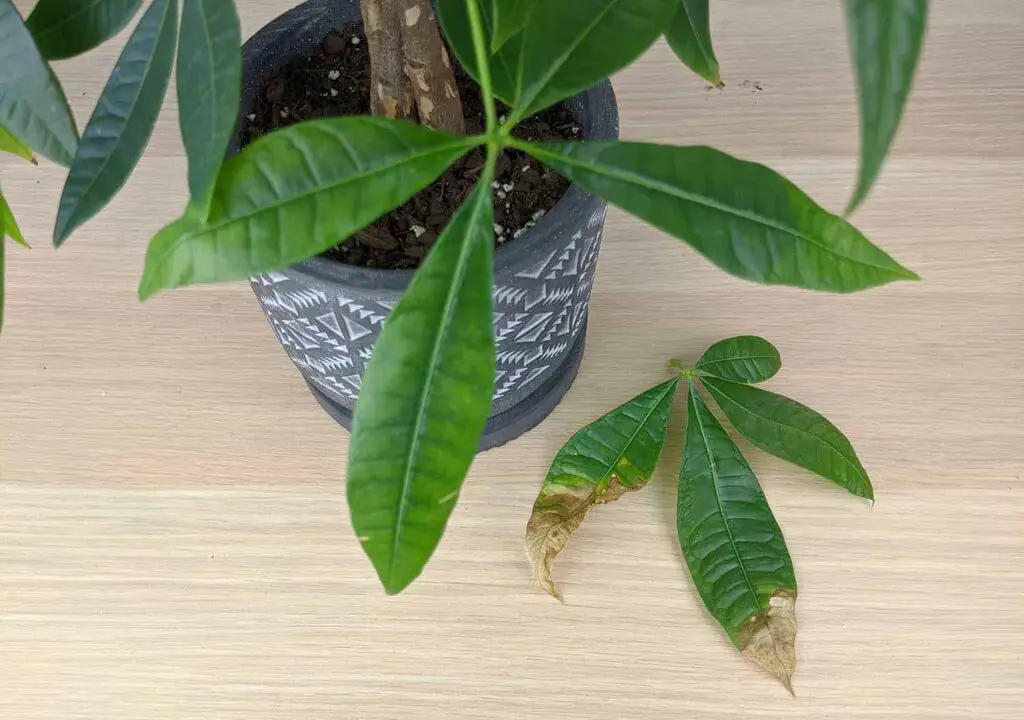The Money Tree, or Pachira aquatica, thrives best in bright, indirect light. It can tolerate low light but may grow slowly and lose its vibrant leaves. Proper placement is key to ensure your Money Tree flourishes and stays healthy.
Understanding the Light Needs of Money Trees
The Money Tree is a popular houseplant known for its unique braided trunk and lush green leaves. Native to Central and South America, it has become a symbol of good luck and prosperity. To keep this plant healthy, it is essential to understand its light requirements. Providing the right amount of light can significantly impact its growth and overall health.

Money Trees prefer bright, indirect sunlight. Direct sunlight can scorch their leaves, leading to browning and leaf drop. In contrast, insufficient light can cause stunted growth and a lack of vibrant foliage. Therefore, it is crucial to find a balance that meets the plant’s needs.
When placing your Money Tree, consider the following factors:
- Natural Light: Observe the natural light in your home. Identify spots that receive plenty of bright, indirect sunlight without harsh rays.
- Artificial Light: If your home lacks adequate natural light, you can supplement with grow lights designed for indoor plants.
- Seasonal Changes: Be aware that sunlight intensity changes with the seasons. Adjust the placement of your plant as needed throughout the year.
Optimal Placement for Your Money Tree
Finding the right spot for your Money Tree is essential for its growth. Here are some tips for optimal placement:

- East or West-Facing Windows: These windows provide gentle morning or afternoon sunlight, which is ideal for your plant.
- Avoid South-Facing Windows: South-facing windows often receive intense sunlight, which can harm the leaves.
- Near a Window with Sheer Curtains: If you only have south-facing windows, using sheer curtains can filter the light and protect the plant.
- Keep Away from Drafts: Avoid placing your Money Tree near air conditioning vents or drafty windows, as sudden temperature changes can stress the plant.
- Monitor Light Levels: Use a light meter or observe the plant for signs of too much or too little light. Adjust its position accordingly.
In addition to natural light, consider the following tips for maintaining your Money Tree’s health:
- Rotate Your Plant: Rotate the plant regularly to ensure all sides receive equal light exposure, promoting even growth.
- Dust Leaves: Clean the leaves occasionally to remove dust. This allows better light absorption.
- Avoid Overwatering: Good drainage is crucial. Overwatering can lead to root rot, especially if the plant is not receiving enough light.
Signs of Improper Lighting
Understanding the signs that indicate your Money Tree may not be receiving adequate light is important. Some common symptoms include:
| Symptom | Description |
|---|---|
| Yellowing Leaves | Indicates overwatering or insufficient light. |
| Leggy Growth | Long stems with sparse leaves suggest inadequate light. |
| Leaf Drop | Can occur from stress due to improper light levels. |
By observing these signs, you can make necessary adjustments to improve your Money Tree’s environment. With the right care, your plant will thrive and bring beauty to your home.

Creating the Ideal Environment for Your Money Tree
To ensure that your Money Tree thrives, it is essential to create an environment that meets its light and humidity needs. In addition to proper lighting, the overall conditions in which the plant is placed can greatly affect its health. Understanding these factors will help you provide the best care possible.
Humidity Levels
Money Trees prefer a humid environment. The ideal humidity level for these plants ranges from 40% to 60%. Low humidity can cause leaf edges to brown and may lead to other health issues. Here are some tips to maintain appropriate humidity levels:
- Use a Humidifier: Place a humidifier near your Money Tree to increase moisture in the air, especially during dry months.
- Pebble Tray: Fill a shallow tray with pebbles and water, then place your pot on top. As the water evaporates, it will create humidity around the plant.
- Misting: Occasionally mist the leaves with water to provide extra humidity. However, do this sparingly to avoid water buildup in the soil.
Temperature Considerations
Temperature plays a crucial role in the health of your Money Tree. The ideal temperature range is between 60°F and 75°F (15°C to 24°C). Extreme temperatures can stress the plant. Here are some key temperature tips:
- Avoid Drafts: Keep your Money Tree away from cold drafts and heat sources, like radiators or air conditioning vents.
- Temperature Fluctuations: Sudden changes in temperature can lead to shock. Try to maintain a consistent environment.
- Monitor Nighttime Temperatures: Nights may be cooler; ensure they do not drop below 50°F (10°C) as this can harm your plant.
Choosing the Right Pot and Soil
The pot and soil you select for your Money Tree are also vital for successful growth. Both elements contribute to drainage and overall health. Here are some considerations:

Pot Selection
Selecting the right pot is essential for ensuring proper drainage. Consider these factors:
- Drainage Holes: Choose a pot with drainage holes at the bottom. This prevents water from accumulating, which can lead to root rot.
- Material: Terracotta pots are great for providing airflow to the roots. Plastic pots retain moisture longer but may require careful monitoring of water levels.
- Size: Ensure the pot is not too large. A pot that is too big can hold excess moisture, while one that is too small may restrict root growth.
Soil Type
The right soil mix is critical for your Money Tree’s health. A well-draining soil mix allows for adequate moisture retention while preventing root rot. Consider these options:
- Cactus or Succulent Mix: These mixes typically have good drainage properties and work well for Money Trees.
- Palm Soil Mix: A blend suitable for palm plants can provide the necessary moisture while allowing excess water to escape.
- Homemade Mix: Create your own by combining equal parts potting soil, perlite, and sand for optimal drainage.
Watering Practices
Watering is another essential aspect of caring for your Money Tree. Proper watering ensures that your plant receives necessary hydration without becoming waterlogged. Here are some tips:
- Check Soil Moisture: Always check the top inch of soil before watering. If it feels dry, it’s time to water; if it’s still moist, wait a few more days.
- Water Thoroughly: When you do water, ensure you do so thoroughly until it drains out of the bottom. This ensures the entire root system gets hydrated.
- Avoid Overwatering: Overwatering is a common mistake that can lead to root rot. It’s better to underwater than overwater.
By paying attention to humidity, temperature, pot selection, soil type, and watering practices, you can create an ideal environment that supports the healthy growth of your Money Tree. Each element plays a vital role in ensuring your plant thrives in its indoor setting.
Common Pests and Diseases
Even with optimal care, your Money Tree may still encounter pests and diseases. Being aware of potential issues can help you address them quickly. Here are some common pests and diseases that affect Money Trees, along with tips on prevention and treatment.
Common Pests
Several pests can infest your Money Tree, leading to various health issues. Here are the most common:
- <
Bank Notes, Dollar, Us Dollars, Usd, Money, Funds, Bills, Paper Money, Finance, Currency, Money, Money, Money, Money, Money strong>Spider Mites: These tiny pests thrive in dry conditions. They can cause yellow spots on leaves and webbing on the plant.
- Mealybugs: These small, white, cottony bugs can be found in leaf axils and can cause wilting by sucking sap from the plant.
- Scale Insects: Scale appears as small, brown bumps on stems and leaves. They can weaken the plant by feeding on its sap.
- Aphids: These green or black insects can cluster on new growth, causing distortion and stunted growth.
Pest Prevention and Treatment
To keep your Money Tree free from pests, consider these preventive measures:
- Regular Inspections: Check your plant regularly for signs of pests. The sooner you detect an infestation, the easier it will be to treat.
- Maintain Humidity: Keeping humidity levels high can help deter pests like spider mites.
- Natural Predators: Introduce beneficial insects, such as ladybugs, that prey on aphids and other pests.
- Neem Oil: Use neem oil or insecticidal soap to treat infestations. Apply according to package instructions for effective results.
Disease Management
Your Money Tree can also be susceptible to various diseases, often caused by improper care. Here are some common diseases:
- Root Rot: This disease is caused by overwatering and poor drainage. It leads to mushy roots and can kill the plant if not addressed quickly.
- Leaf Spot: Fungal infections can cause dark spots on leaves. This typically occurs in overly moist conditions.
- Powdery Mildew: A white fungal growth that appears on leaves, often due to inadequate air circulation and high humidity.
Disease Prevention and Treatment
To prevent diseases from affecting your Money Tree, implement these strategies:
- Avoid Overwatering: Ensure the pot has drainage holes and allow the soil to dry out slightly between waterings.
- Improve Air Circulation: Position your plant where it has good airflow. This helps reduce humidity around the leaves, preventing fungal growth.
- Remove Affected Leaves: If you notice discolored or diseased leaves, remove them promptly to prevent spreading.
- Fungicides: Use fungicides as a last resort for severe fungal infections. Follow the manufacturer’s instructions for safe application.
Seasonal Care Tips
Your Money Tree’s care may need adjustments based on the season. Each season presents unique challenges and opportunities for your plant’s growth. Here are some seasonal care tips:
Spring Care
Spring is a time of growth and rejuvenation for your Money Tree. Consider these tips:
- Repotting: If your plant is root-bound, consider repotting in a slightly larger pot with fresh soil.
- Increased Watering: As temperatures rise, increase watering frequency while ensuring proper drainage.
- Fertilization: Begin fertilizing with a balanced houseplant fertilizer every four to six weeks.
Summer Care
Summer brings warmth and light. Focus on these care aspects:
- Avoid Direct Sunlight: Ensure your Money Tree is not exposed to harsh direct sunlight that can scorch its leaves.
- Misting: Regular misting can help maintain humidity levels during hot months.
- Pest Monitoring: Keep an eye out for pests that thrive in warm weather, such as spider mites and aphids.
Fall Care
As temperatures cool in fall, adjust care accordingly:
- Reduce Watering: Decrease watering frequency as the plant’s growth slows down.
- Pest Vigilance: Continue monitoring for pests; indoor conditions may change as windows are closed.
- Prepare for Winter: Consider moving the plant away from drafty windows or heating vents that can cause stress.
Winter Care
Winter presents unique challenges due to lower light levels and humidity. Follow these guidelines:
- Supplemental Lighting: If needed, use grow lights to provide adequate light during short days.
- Misting Less Frequently: Be cautious with misting, as too much moisture can lead to fungal issues in low light conditions.
- Avoid Overwatering: Continue checking soil moisture more frequently as plants require less water in winter.
Caring for your Money Tree throughout the changing seasons ensures its health and vitality. By adjusting your care based on seasonal needs, you will support robust growth and minimize potential issues.
Understanding the needs of your Money Tree is essential for its longevity and vitality. In addition to its light requirements and care throughout the seasons, it is important to recognize how environmental factors and interactions with other plants can influence its growth. Let’s explore the relationships between plants and how they can benefit your Money Tree.
Companion Planting
Companion
planting refers to the practice of placing different plants together to enhance growth, deter pests, or provide mutual benefits. While Money Trees are typically grown alone, they can thrive in settings where they share space with compatible plants. Here are some plants that make good companions for your Money Tree:
- Peace Lily: This plant shares similar humidity and light needs, making it a great companion.
- Pothos: Pothos are hardy plants that can adapt to various light conditions and help improve indoor air quality.
- Spider Plant: Spider plants are non-toxic and help purify the air, creating a healthy environment for your Money Tree.
- Dracaena: Another popular indoor plant, Dracaena offers similar care requirements, making them suitable companions.
Propagation of Money Trees
If you’re interested in expanding your collection or sharing your Money Tree with friends, propagation is an option. Money Trees can be propagated through cuttings or seeds. Here’s how:
Propagation by Cuttings
Taking cuttings is the most common method for propagating Money Trees. Follow these steps:
- Choose a Healthy Stem: Select a healthy stem with several leaves.
- Cut the Stem: Use clean pruning shears to cut a section about 6 inches long just below a leaf node.
- Remove Lower Leaves: Remove the leaves from the lower half of the cutting to prevent rot when placed in soil.
- Rooting Medium: Place the cutting in a pot with a well-draining soil mix, ensuring it stays moist but not soggy.
- Provide Light: Place the pot in a bright, indirect light location and maintain humidity, possibly using a plastic bag over the pot to retain moisture.
Propagation by Seeds
While less common, you can propagate Money Trees from seeds. Here’s how:
- Obtain Seeds: Purchase seeds from a reputable source or collect them from a mature tree.
- Sow Seeds: Plant seeds in a seed-starting mix, covering them lightly with soil.
- Keep Moist: Water gently to keep the soil moist but not waterlogged.
- Provide Warmth and Light: Place the container in a warm spot with bright, indirect light.
- Transplanting: Once seedlings have a few sets of leaves and are sturdy enough, transplant them into individual pots.
Caring for Your Money Tree Long Term
Long-term c
are for your Money Tree involves regular maintenance and monitoring. Here are some essential practices to ensure your plant remains healthy over time:
- Regular Fertilization: During the growing season (spring and summer), provide a balanced liquid fertilizer every 4-6 weeks.
- Pruning: Trim away any dead or yellowing leaves periodically to promote healthy growth and maintain an attractive appearance.
- Repotting Every Few Years: As your Money Tree grows, it may become root-bound. Repot every 2-3 years in fresh soil to give it room to grow.
- Pest Monitoring: Continue monitoring for pests regularly. Early detection will make treatment easier and prevent infestations.
Conclusion
Caring for a Money Tree involves understanding its specific light requirements and environmental needs. By providing adequate light, humidity, and temperature conditions, along with proper watering and soil composition, you can create an optimal environment for thriving growth. Remember to be vigilant against pests and diseases while adjusting care with the seasons. Companion planting can also enhance its environment while propagation allows you to expand your collection. With these considerations in mind, you can enjoy a healthy and beautiful Money Tree for many years to come.
